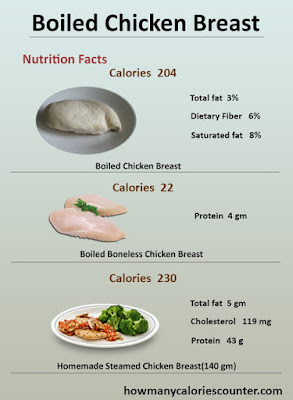Chicken breast has about 24 calories per serving and there are about five grams of protein in every one-ounce serving. So, if you have one serving of chicken breast nutrition you will get five grams of protein and this will be an excellent source of nourishment. Now, the first question that you might ask is how much protein is in a serving of chicken breast? This depends on the product and the brand that you buy.
The calories are not the only thing that you need to consider when it comes to chicken breast nutrition. The other two things that you should keep in mind are the fat content and the sodium content of the product. Do you really want to take a risk with your health? Of course you don't. So, you need to make sure that you choose chicken breast that has a low fat content and high fiber content. This way you won't have to worry about your waistline bulging out with every serving of food that you have.
Chicken breasts are leaner than most other meats and because of this you need to make sure that you consume them in moderation. One of the best ways to consume chicken breast nutrition safely is to eat them with a salad. You can add some vegetables and you will be able to absorb all of the nutrients that you have consumed. Of course this is assuming that you have added vegetables to your diet already.
Another good way to ensure that you consume chicken breast nutrition safely is to portion it in smaller portions. A 3.5-ounce serving of chicken breast contains around sixty calories and will provide you with around eight grams of protein. Since these are low calorie foods, you will easily be able to maintain your calorie intake. Now if you were to portion it in large portions then you would be consuming more calories than you should. Since the calories are not as high as they are in large portions you will be consuming a healthier product. Since chicken breasts are leaner and of course low in fat, you will be consuming more protein, which is always a good thing.
You may be wondering why there is a difference between the white meat and the dark meat chicken breasts. Well, the white meat has a lot more fat and calories than the dark meat which is what we are interested in. Since it is the white meat, you may end up eating more calories than you should be since it is a high calorie product. Since there are so many benefits of chicken breasts this shouldn't be a concern for you.
While you can get the protein from the chicken breast you will still be getting all the vitamins and nutrients you need to maintain good health. The vitamins are especially important for anyone who may have a vitamin deficiency and are trying to build muscle. This is one of the most common reasons as to why people are looking to eat chicken breast and other lean meats. It is also a good source of Vitamin D, which is very important for those who don't get enough during the day.
There are two types of chicken breast, skinless chicken breast and boneless skinless chicken breast. Skinless chicken breast will contain less fat and calories and is higher in protein than the regular version. Boneless skinless chicken breast is lower in calories but contains a little bit more fat than the regular chicken breast. One thing you should be aware of is that boneless skinless chicken breast is not really low in calories because it will contain more protein. So although it has less fat and fewer calories than regular chicken breast you will still end up eating more than you would with regular meat.
